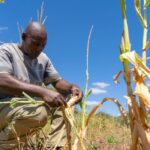
Pastoral scenes of vast open spaces filled with roaming cattle have long been emblematic of the American landscape. Rangelands cover almost half of the contiguous U.S. and include grasslands, deserts and shrublands. These ecosystems are integral to our way of life in that they provide services ranging from food production to carbon sequestration.
To anticipate how both natural and human-driven factors might influence these services in the years to come, a team of researchers recently undertook a comprehensive scenario assessment, each scenario offering a unique glimpse into the potential futures we could encounter.
The results of the assessment are described in a paper, co-authored by Arizona State University Regents and Foundation Professor Osvaldo Sala of the School of Life Sciences and the Global Institute of Sustainability and Innovation, that was recently published in Nature Sustainability. The paper, “Supplying Ecosystem Services on U.S. Rangelands,” sheds light on the potential crossroads facing these ecosystems as they are confronted with evolving societal and environmental changes.
“This paper describes four alternative futures for the rangelands of the U.S., which cover 40% of the country. Any person interested in the future of this huge region should be interested in this publication,” Sala said. “Rangelands of the U.S. will be severely affected by changes in climate and the demands of humans.”
Four distinct scenarios emerged from the researchers’ assessment, driven by different rates of climate change and differences in the demand for services provided by rangelands, from traditional livestock production to production of renewable energy and amenity services.
“Scenarios are an extraordinary tool to communicate current scientific understanding and connect with decision-makers,” Sala said.
The results of the assessment indicate that the future of rangelands is flexible; as the climate shifts and the demand for services provided by rangelands evolves, humans’ ability to proactively plan and adapt becomes more vital.
Rangelands currently stand at a crossroads, and the choices made now will determine whether these landscapes thrive, adapt or transform in the face of a rapidly changing world.
Source : ASU News





